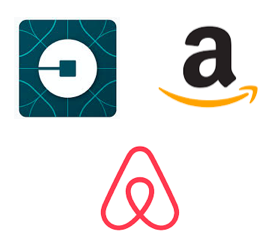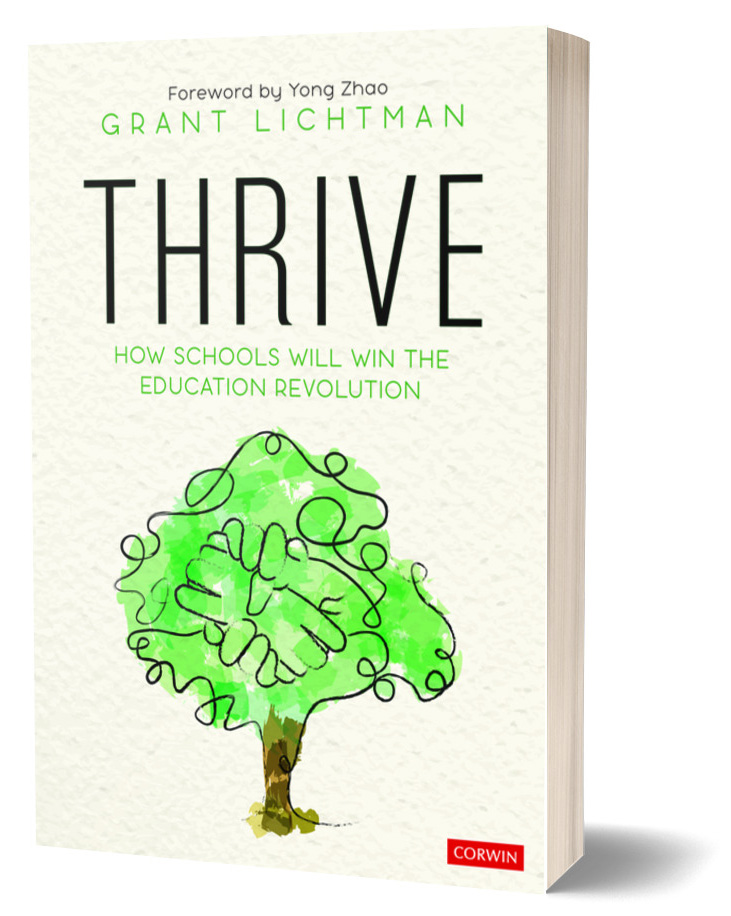A dozen years ago just a tiny fraction of schools had started to transform in response to the realities of a rapidly changing world. Five years ago, we started to see powerful conversations and intentional, significant change at a much wider range of schools. Today we may be approaching the tipping point, at least in terms of the recognition that stasis will not work.
But are we “sneaking and tweaking”? Or are we imagining the real magnitude of change that will be needed in the next very few years? What are the lessons we have learned from the really big, disruptive, industry-busting innovations that have mutated entire business models in the last five years? How should those inform and provoke school leaders today?
 Let’s take just three of the most disruptive transformations in the non-education world:
Let’s take just three of the most disruptive transformations in the non-education world:
- Taxis to ride sharing
- Hotels to Airbnb
- Malls to online shopping
Each of these have turned major commercial sectors upside down in a very short period of time. What do they have in common that should be ringing in the minds of every school leader?
- Bypass Infrastructure: each of these mutations has blown apart an industry that was based on centralized physical locations or assets. The value and ROI of those assets have dropped dramatically because they are just not as necessary as they were even a very few years ago.
- Decentralized decisions: Large, centralized providers told us what to buy and use. We stayed at night where hotel chains decided we should stay and accepted the monopoly of one taxi company at the airport or throughout downtown. We bought what stores put on the shelf. All of those decisions have now been widely distributed throughout a much deeper system of producers, providers, and consumers.
- Individual connections: People, not large organizations, now connect directly with each other. The web of commercial connections is vastly more complex, yet vastly less stratified, than it was a decade ago. Middle men are disappearing. People connect with people where they find mutual benefit, sometimes with a financial transaction and often without.
We can think of an example from the natural world. The human “hive” is decreasingly reliant on the queen bee. The power has shifted to the “worker bees” who, we know, are the ones who actually know where the honey is. These new connectivity pathways allow many or all of us to find “honey”, and communicate or transact that value directly to others.
Is your strategic team thinking about learning that may bypass infrastructure, empower decision-making without a team of educators at the center, and rely on massively connected networks of individuals? If not, do you have a good reason, or is it just inertia and the complexity of the problem?
School leaders who still think that “innovation” or “transformation” of their schools is about a new classroom technology, maker spaces, 3D printers, getting rid of Advanced Placement courses, or shifting to Singapore Math, are not seeing the world as it really is beyond their walls and campuses. In just the last week I have talked with a major district that is planning to decentralize high schools by embedding smaller mini-campuses throughout the community to allow students to follow interest-based learning opportunities with business and non-profits; a district that is calculating and providing pathway options for students and families that take into account future debt loads and the ROI of different education and career choices; a school in Canada that is designing an urban micro-campus; and one in Connecticut that is blowing apart their outdated class, department, assessment and time structures.
Each of these is an example of a school community that sees the difference between “building a better hotel” and embracing “Airbnb world”. They are learning the lessons of the evolving cognitosphere where flat, distributed, direct connections provide consumers with equal or greater value at lower cost. There is no reason to think that this trend will reverse, and many reasons to think that it will accelerate. These are “third horizon” changes, and there is every reason to believe that education is already in the early stages of this radical evolution.











Grant, your thesis and article is a perfect example of what education, schools, teachers, learning, thinking, understanding, having a vision and preparing for the future, and transforming the rigor of studying into an “enjoyable experience” is all about: Turning simple ideas, visions and even dreams into reality. The larger picture of Uber and Airbnb founders and the many persons who are successful, fulfilled, and who aspire to change the world–is their SIMPLICITY. It’s their ultimate sophistication to keep things simple and basic… like the four processes in math: Add, subtract, multiply and divide. That’s what these successful doers and creators do: They live, think, talk, do, and accomplish “simply.” Their genius is neither magical nor mysterious. It is the natural consequence of consistently applying the basic fundamentals… in math or in life too they seek the simple common denominator. To solve the human equation, for example, they add love, subtract hate, multiply good, and divide between truth and error. Their genius is the ability to say a profound thing in simple ways. History shows the people who end up changing the world– the great political, social, scientific, technological, artistic, sports, leadership, educational revolutionaries–are always a bit nuts, until they are right, and then they are geniuses. And yes, these inspired, creative spirits have always encountered violent opposition from mediocre minds. How would an entrepreneur solve these prospective reasons for student academic failure, behavioral problems, and disinterest: 1) Not fitting in, 2) not mattering, 3) overlooked talents and interests, and 4) teacher and school restrictions? Would they think productive learning, mastery, and rigorous and enjoyable student engagement result primarily because of student expectation…expectation of enjoyable relationships, study relevance, learning authenticity, application, choice, challenge, play, practice, time, and timing? Is it possible that failed expectations can explain disinterest and why students disengage? The point is—are our nation’s teachers self-empowered to better the world of education? Thank you.
Thanks, Rick! I am going to add “simplicity” to the list of what makes these innovations so effective. I missed that one…it is just so obvious I was thinking too hard!